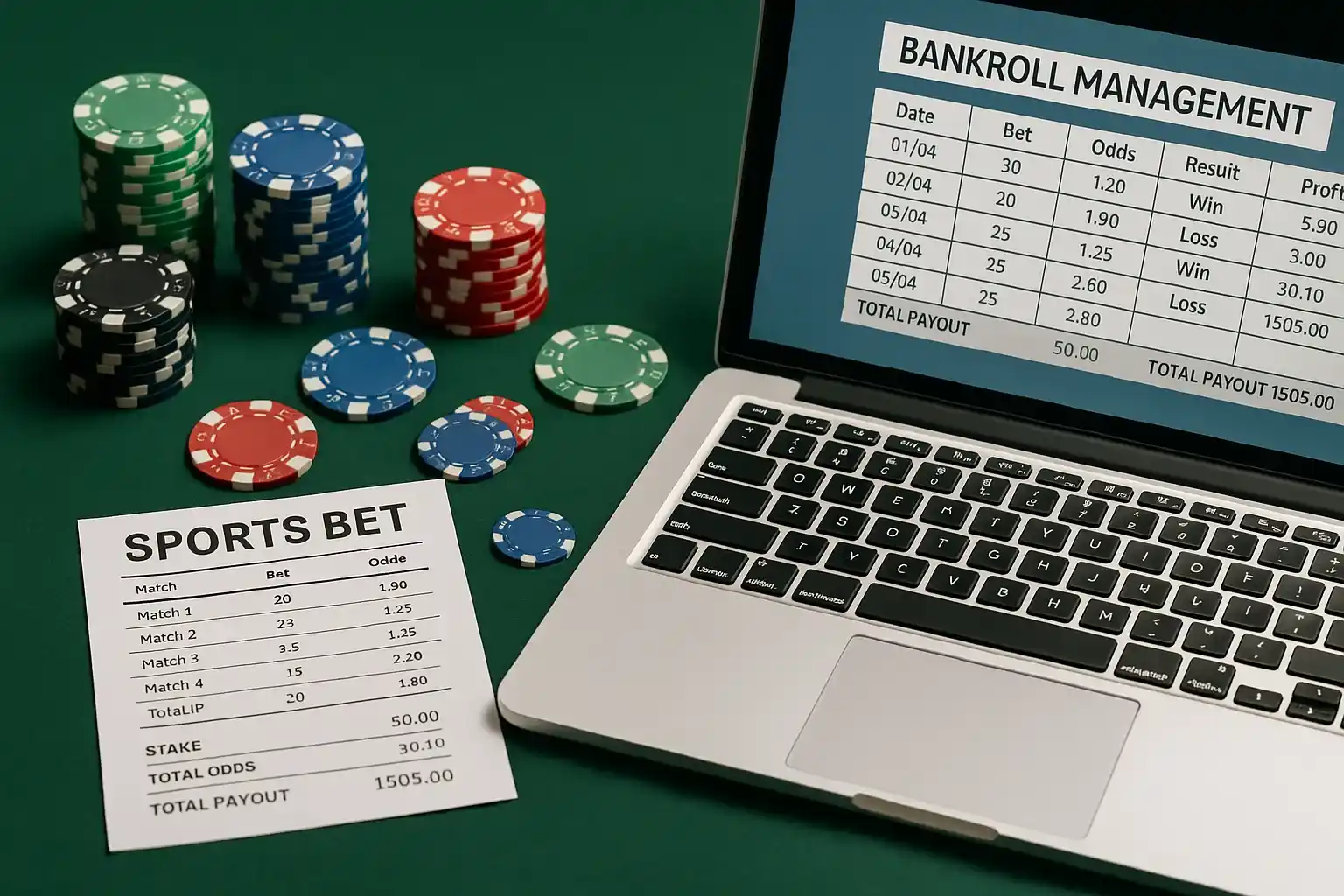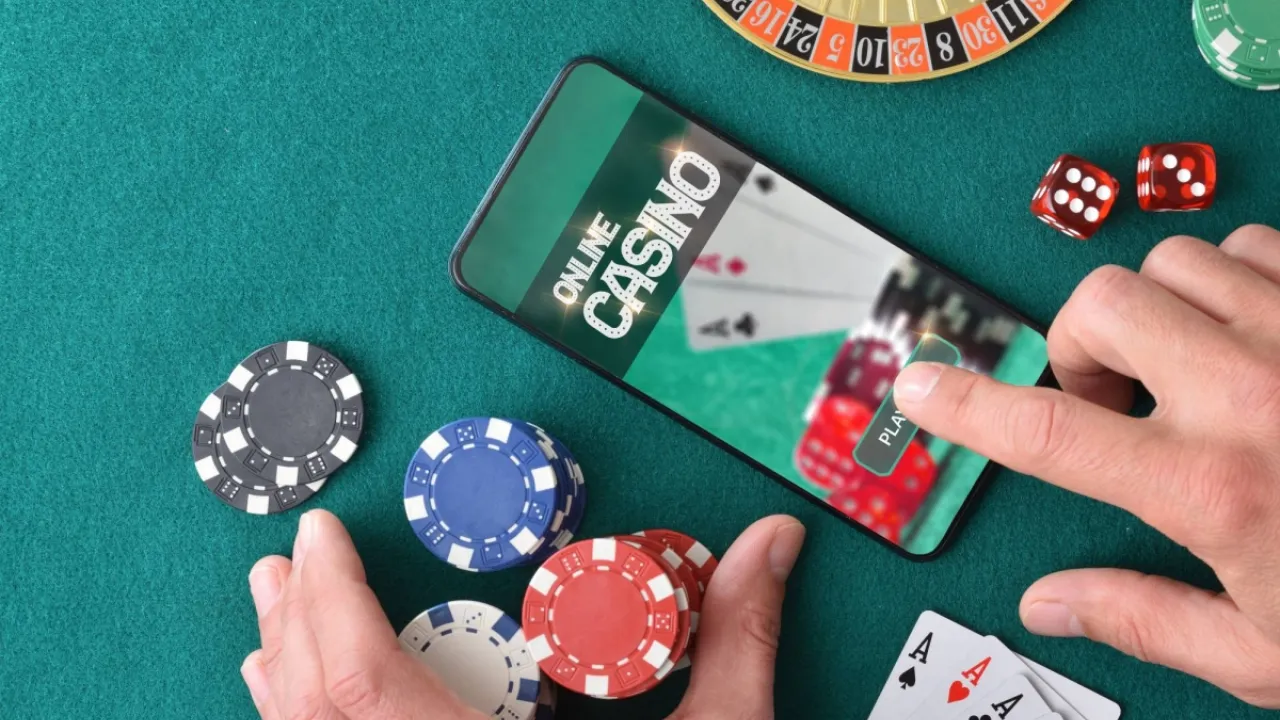There’s a moment every bettor recognises: you’re a few wagers deep, the adrenaline is humming, and suddenly you realise you’ve staked far more than you meant to. I’ve been there—sweating a midweek tennis match I barely researched because I chased a loss from the night before. That was the day I stopped treating bankroll management like optional fine print and started using it as my actual edge. The truth is, skill and analytics help, but discipline with money is what keeps you in the game long enough for skill to matter.
Bankroll management isn’t sexy. No one brags on Twitter about staking two percent of their roll and walking away when they hit their loss limit. But it’s the quiet system underneath every long-term winning strategy I’ve seen, whether in sports betting, poker, or live casino play. If you want to feel like a pro instead of a passenger, you need a plan for your money before you put a single pound on the line.
Let me walk you through how I structure it, the mistakes I still see friends making, and why even something as boring as withdrawal speed belongs in your bankroll toolkit.
What Is Bankroll Management, Really?
Think of your bankroll as a business’s operating capital. It’s not “money in your account”—it’s the specific chunk of cash you’ve ring-fenced for gambling. The job of bankroll management is to preserve that capital so variance doesn’t knock you out before your edge can show up.
In practice, that means two big rules. First, you decide your unit size (a small percentage of the bankroll) and you stick to it. Second, you set hard stop-loss and stop-win points for a session. It sounds restrictive, but paradoxically it frees you. You know the rules, so you can focus on making good bets instead of battling impulse.
The Psychology Behind the Numbers
Most players I meet don’t blow up because they can’t do maths—they blow up because the maths collapses under pressure. When you’re on tilt, your brain rewrites risk to justify the next bet. The simplest armour is automation: predefine unit size, keep it static during a session, and never chase. If you want to adjust stakes, do it between sessions when you’re calm, not in the heat of a streak.
One Bankroll, Many Wallets
I split my bankroll into actual “wallets”: main roll, daily play stack, and a reserve I don’t touch without a reset ritual (yes, I make myself write a note in Google Keep before moving money). Segmentation makes overspending harder because you physically need to transfer funds, which adds a speed bump between impulse and action.
Why Payout Speed Is Part of Bankroll Management
Here’s the piece hardly anyone talks about: liquidity. Your bankroll only works if you can move it. That’s why I put as much weight on withdrawal policies as I do on odds. If a site takes four days to pay out, your roll is semi-frozen—and frozen money can’t be redeployed efficiently. I maintain a shortlist of fast payout casinos uk for exactly this reason. One well-timed cashout can be the difference between calmly reloading for the weekend’s slate and rage-depositing on a second-rate site because your funds are stuck.
Float, Not Fortune
Fast payouts also support the idea of “float”—keeping only what you need for the week on a given platform and sweeping profits back to your core wallet. That habit turns variance into a controlled trickle instead of a flood you’re forced to surf.
Trust Is a Bankroll Metric
If an operator obfuscates fees or drags its feet on verification, treat that as a leak. Time is value. Every extra day waiting is a day your capital can’t compound through +EV bets. When you evaluate sites, add their cashier behaviour to your spreadsheet right next to RTPs and lines.
Setting the Numbers: How Much Is a Unit?
There’s no magic percentage, but most disciplined bettors land between one and three percent of the total bankroll per wager. I personally start at two percent for straight bets and drop to one percent for high-variance parlays or novelty props. If I’m playing blackjack or baccarat live, I scale the base bet lower because of the faster turnover of hands.
Recalibration Without Sabotage
Only recalculate unit size after a meaningful bankroll change—say, a 20% move up or down—and only between sessions. Constantly tweaking size mid-run is just another form of chasing. Think of it like changing tyre pressure: you don’t do it while the car’s moving.
Stop-Loss and Stop-Win: The Seatbelts You Actually Use
I cap my daily loss at 10% of the total bankroll. If I hit it, I’m done, even if a can’t-miss opportunity pops up. I also set a softer stop-win: if I’m up 15–20% on the day, I bank it. Winning streaks induce their own recklessness—there’s nothing like a heater to make you believe you’re invincible. Locking in a profit resets your head.
The “Cooling-Off” Ritual
When I hit either limit, I literally change environments—close the betting browser, stand up, grab water. Physical movement seals the decision. Relying on willpower while you’re still staring at a live odds feed is asking for trouble.
Tracking: The Boring Spreadsheet That Pays You
If you don’t track, you’re guessing. I log every bet: market, odds, stake, result, and—this is key—how I felt placing it. Over time you start seeing patterns: certain leagues you overestimate, time-of-day you tilt, or specific bet sizes that correlate with poor decisions. The emotional column turned out to be my secret decoder ring; 80% of my worst bets were made when I was “annoyed” or “trying to get even.”
Tools That Don’t Get in the Way
I’ve tried fancy apps, but I always come back to a simple Google Sheet synced on my phone. Fast entry means I actually use it. I keep a pivot tab to see ROI by sport and bet type, which quietly nudges me away from weak spots.
Bankroll Management Across Vertical Lines
You might be a sports bettor dabbling in live roulette, or a poker grinder taking a shot at weekend parlays. Each vertical has a different variance profile and pace, so treat them as separate mini-rolls. My poker bankroll swings are slower and more predictable; my casino roll is faster and capped tighter. Mixing them without accounting for that variance is like combining volatile tech stocks with bonds and calling it all “just investments.”
Live Casino Specifics
Live dealer games move fast and provide little downtime for reflection. To compensate, I pre-set session length (in minutes, not just hands) and use a visible timer. I also note the table limit and ensure my unit size leaves at least 25–30 units of fall-back room before hitting the minimum stop.
Emotional Bankroll: The Part No One Quantifies
Your emotional bankroll is how much tilt you can absorb before your decision-making degrades. Mine is lower when I’m tired, hungry, or distracted. I actively schedule sessions after meals and away from family obligations. If you’re juggling a screaming toddler and trying to decide whether to hedge a live bet, your edge is evaporating in real time.
Recovery Days Are Strategy, Not Laziness
After a big downswing, I take at least a day off. Not to “win it back tomorrow,” but to reset neurotransmitters and perspective. That’s no different from athletes taking rest days to avoid injury.
Bankroll Growth: Patience vs. “Hero Mode”
Everyone dreams of doubling up fast, but slow compounding turns out to be the only repeatable path. When I started, I set quarterly goals: grow the roll by X percent, not “win £5,000 this month.” If I overshoot, great. If I miss, I adjust my process, not my dreams. Hero bets—those big, brave, go-for-it lumps—belong in movies, not management plans.
Scaling Up Smoothly
When the roll grows, resist the urge to instantly double stakes. The jump from £20 units to £40 feels small until you hit a losing streak. Increase gradually and test your comfort. If watching a standard unit lose makes your stomach drop, you scaled too quickly.
The Role of Edges and Models
If you’re using models or following tipsters, bankroll management is the glue that keeps the strategy coherent. Edge is probabilistic, not guaranteed. Without money rules, you turn edge into noise. With money rules, even a modest two percent edge can grind out profit over thousands of bets.
Tipsters and Trust
Paying for picks? Treat the subscription fee as part of your bankroll cost. If their style doesn’t fit your risk tolerance—giant parlays, wild staking plans—walk away. Your money rules come first; the picks are inputs, not gospel.
When to Reset, Retire, or Reinvest
There are moments to pause and reassess: after a promotion hits (extra capital), when life expenses change, or if you shift focus from, say, football to eSports. I do a quarterly review where I “close the books,” check ROI by segment, and decide whether to withdraw profits or roll them forward. Sometimes the best bankroll move is withdrawing and buying something tangible—a reminder that profit is real, not just numbers on a screen.
Knowing When to Quit Altogether
If gambling stops being fun, or if it’s bleeding into parts of your life you care about, the smartest bankroll move is to stop. There’s no shame in stepping away. In fact, that level of self-governance is the ultimate demonstration that you, not variance, are in charge.
So, Is Bankroll Management the Secret Weapon?
“Secret” is the wrong word; it’s hiding in plain sight. But yes, bankroll management is the weapon that separates the hobbyist who gets lucky from the bettor who lasts. It won’t turn a bad bettor into a winning one—but it will give a good bettor the breathing room to let their edge play out. It makes your gambling feel like a series of informed business decisions instead of emotional lunges.
When you control your money, everything else sharpens: you pick your spots better, you sleep easier, and you get to enjoy the thrill without the dread. And when your bankroll moves quickly, transparently, and on your terms—thanks to operators who actually pay fast—you start to feel like a professional, even if you’re playing from a kitchen table with a spreadsheet open beside your chips.





